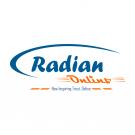REQUIREMENTS TO POWER A DC FREEZER

You’re deciding to go off-grid, great! The next question you may be asking yourself now is “What kind of solar system do I need to make a dc freezer work?”. Have no fear, I will try my best to explain to you how a dc freezer works? As well as the requirements needed.

CHECK OUT OUR WIDE RANGE OF DC FREEZERS HERE
SOLAR PANELS
Solar panels are made of a thin layer of semi-conducting material (usually silicon) between a sheet of glass and a polymer resin. When exposed to daylight, the semi-conducting material becomes 'energised' and this produces electricity.
Types of Solar Panels:
Solar panels are mainly classified into three types:
a. Monocrystalline panels
b. Polycrystalline Panels
c. Thin Film Amorphous Panels
All are made from silicon, but differ in the way the silicon is cut and treated.

CHECK OUT OUR WIDE RANGE OF SOLAR PANELS HERE
SOLAR BATTERIES
The Battery is the “heart” of the solar power energy system. Without batteries to store energy you would only have power when the sun IS shining. A battery is essentially a storage vessel for electricity. It is a critical component heavily relied upon by the system as a whole. A battery can provide a relatively constant source of power when the grid is down, or during periods when your solar panels are not producing power such as at night or on cloudy days. Although batteries are not one hundred percent efficient, they are predictable and stable enough for reliable long-term service. For many installations of one or two solar panels, one large battery has enough storage capacity, but for larger systems it may be necessary to connect multiple batteries to create a 'battery bank'. Using correct battery types and size is crucial to the efficiency of your solar power system. So to have an efficient and reliable solar power energy system, you need batteries which are the correct type and size. But which ones? The first thing to do is to identify the type of battery you will use in your system.
Types of Batteries:
One of the most common battery used in the world is the 12 Volt Lead-Acid Battery. Lead-Acid batteries are available in two kinds: a. Deep Cycle Lead-Acid Batteries – Commonly used in Renewable Energy Systems b. Starting Lead-Acid Batteries – Commonly used in Cars and other vehicles

CHECK OUT OUR WIDE RANGE OF SOLAR BATTERIES HERE
CHARGE CONTROLLERS
At a most basic level, charge controllers prevent batteries from being overcharged and prevent the batteries from discharging by stopping the solar panels pulling power from the battery/battery bank at night. The most basic units have a single LED power indictor, whereas more advanced units have an LCD display giving a range of system information. Some controllers also prevent batteries from getting over-discharged, protect from electrical overload, and/or display battery status and the flow of power.

What size charge controller do i need?
The charge controller is a vital part of your solar power energy system and it needs to be:
- Large enough to manage the currents flowing from your solar panels: It is essential that the total current rating (in amps) of your solar panels does not exceed the rating of the charge controller (in amps), otherwise the charge controller will constantly switch off the system (go into Overload protection mode).
- Large enough to match your system voltage: If you will wire your solar panel array and your battery bank as a 12V system, you will need a charge controller which is also rated 12V. Similarly, if you will wire your solar panel array and your battery bank as a 24V system, you will need a charge controller which is also rated 24V. A higher rated charge controller can also be used for a lower rated system but not vice-versa.
To calculate the current rating of your solar panels, multiply the 'short-circuit current' (Isc) which is usually indicated on the back of a panel, by the number of panels in the solar panel array.
Example:
The short-circuit current (Isc) of a 100W Thunderbolt solar panel is 6.20A. If you will use 2 x 100 Watt Thunderbolt solar panels as your solar panel array, then
2 x 6.20A = 12.4A
Therefore the minimum charge controller size (in Amps) that you need is 12.4A.
Since the nearest standard charge controller size on the market is 20 Amps, you need a 20 Amp charge controller.
There is no problem going with a 30 Amp or even larger controller, other than the additional cost. If you think your solar panel array may increase in size in the future, you are better off getting a larger charge controller.
CHECK OUT OUR WIDE RANGE OF SOLAR CHARGE CONTROLLERS
SUMMARY
The picture below depicts the solar connections













